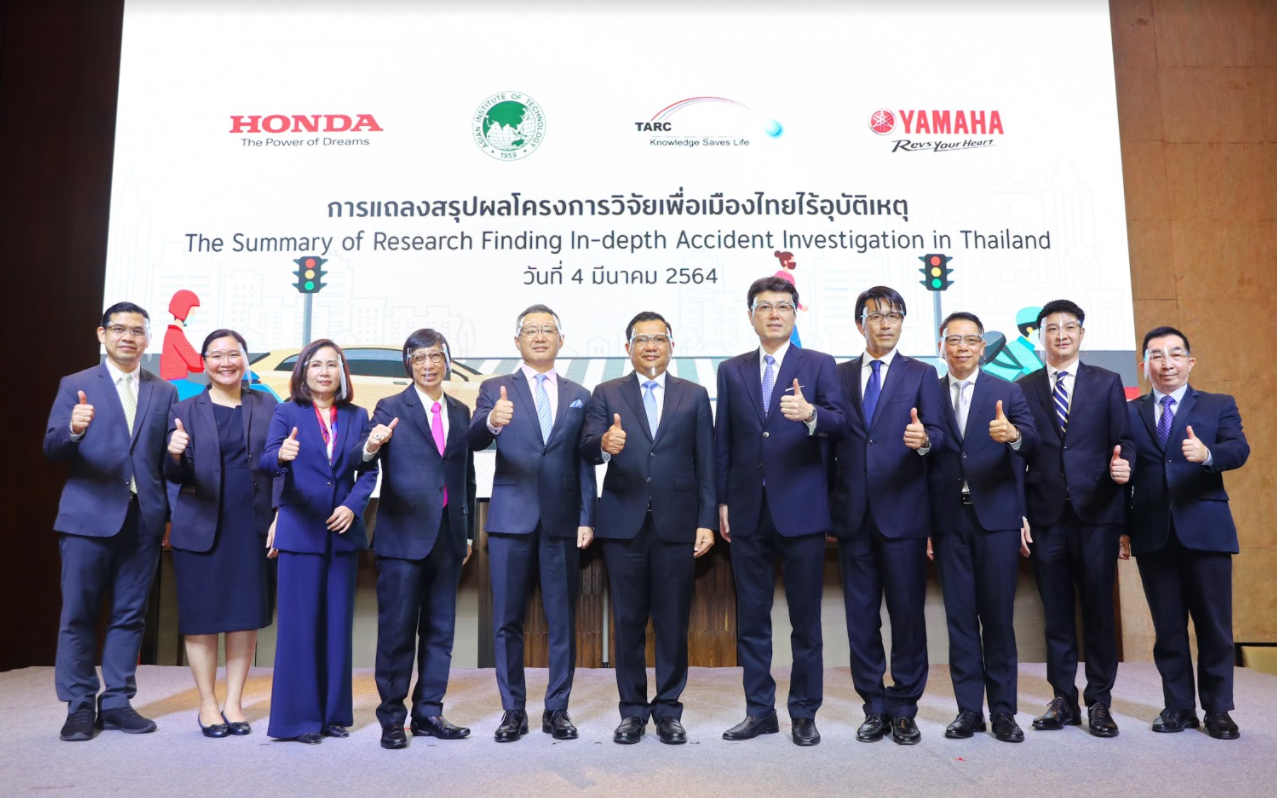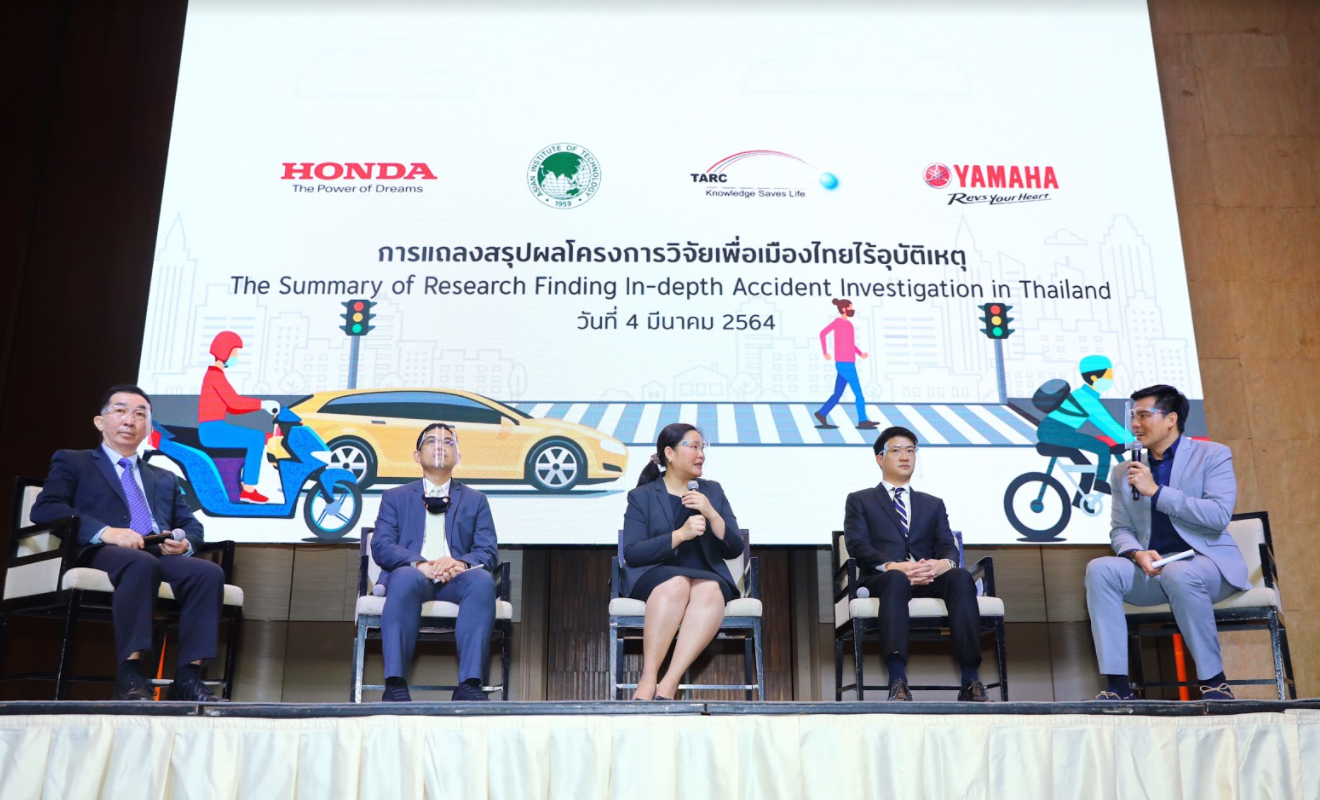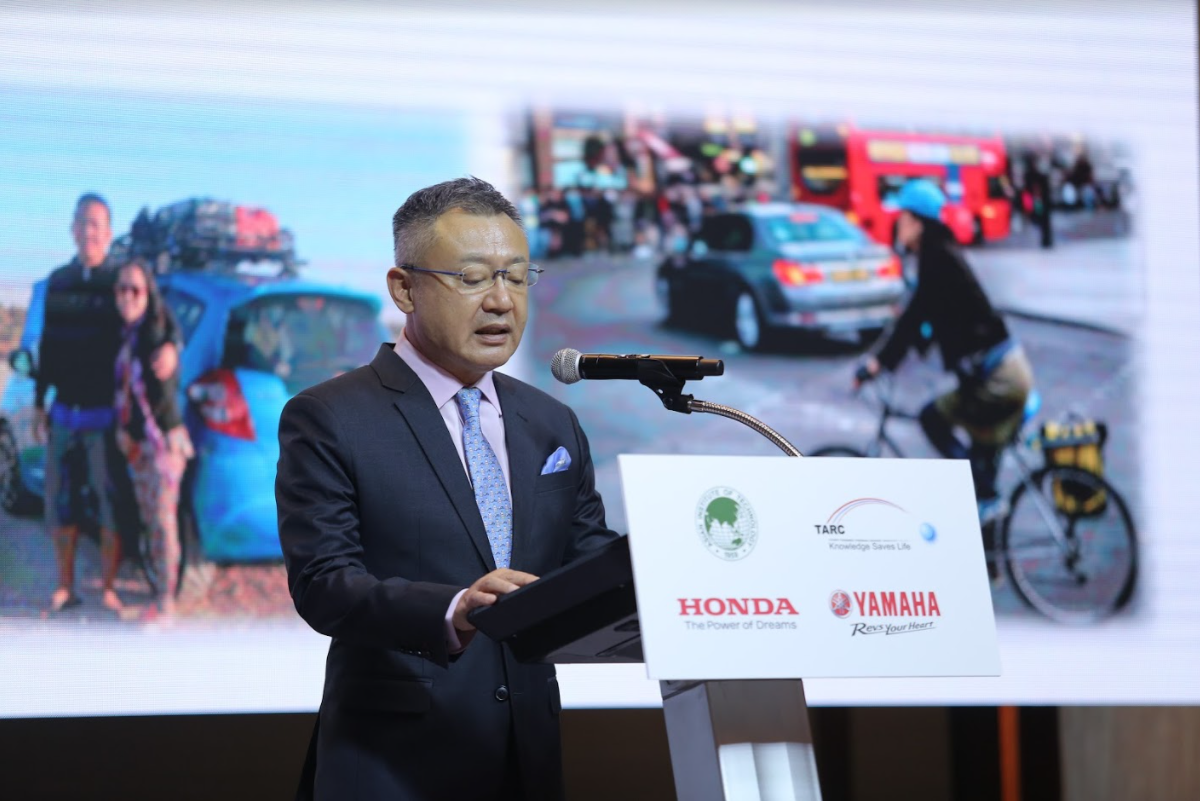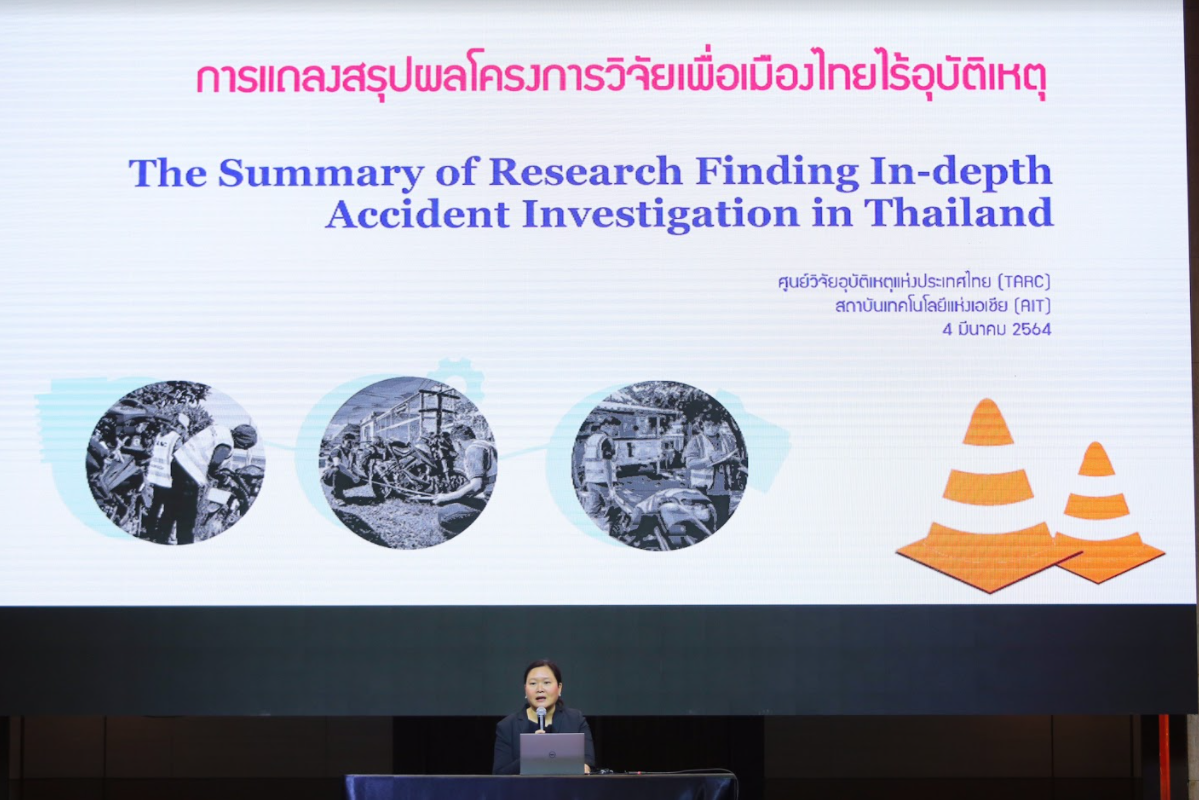Honda and Yamaha Together with Thailand Accident Research Center Reveal the Findings of “In-depth Accident Investigation in Thailand”
- Honda and Yamaha, in collaboration with Thailand Accident Research Center (TARC), under the Asian Institute of Technology revealed the summary of findings from the “In-depth Accident Investigation in Thailand”.
- Motorcycle riders’ perceptual failure is the major cause of accidents
- Cutting in front of vehicles is the most common pattern resulting to high fatality rate
- The majority of victims in road accidents are young riders.
Honda and Yamaha, in collaboration with Thailand Accident Research Center (TARC), under the Asian Institute of Technology revealed the summary of findings from the “In-depth Accident Investigation in Thailand”. The investigation, which was based on 1,000 cases, found that motorcycle riders’ perceptual failure is the major cause of accidents while cutting in front of vehicles is the most common pattern resulting to high fatality rate. Besides, the majority of victims in road accidents are young riders.
Represented at the event were Mr. Chirute Visalachitra, Director General of Department of Land Transport, Mr.Masayuki Igarashi, President and Chief Executive Officer of Asian Honda Motor Co., Ltd., Mr.Tatsuya Nozaki, Chief Executive Officer of Thai Yamaha Motor Co., Ltd., and Associate Professor Dr.Kunnawee Kanitpong, Manager of the Thailand Accident Research Center.
The project, “In-depth Accident Investigation in Thailand”, was conducted by TARC with initiation and support from Honda Motor Co., Ltd., Asian Honda Motor Co., Ltd., Yamaha Motor Co., Ltd., and Thai Yamaha Motor Co., Ltd. The aim was to find the root cause of accidents that involve motorcycles and seek appropriate solutions to the problem.The research team investigated 1,000 traffic accidents at the spot between 2016-2020.
Mr. Masayuki Igarashi, President and Chief Executive Officer of Asian Honda Motor Co., Ltd., mentioned: “Honda always prioritizes safety to bring people the joy and freedom of mobility while pursuing a collision-free society. To achieve this goal, a strong collaboration from all stakeholders in society is the key to success. We hope the findings will be useful for the operation to reduce traffic accidents by all parties.”
Mr. Tatsuya Nozaki, Chief Executive Office of Thai Yamaha Motor Co., Ltd, said: “With good governance as the core management principle, Yamaha is determined to provide continuous support to any activities that will significantly reduce road accidents in Thailand. I believe the research findings will be beneficial to all stakeholders.”
Associate Professor Dr. Kunnawee Kanitpong, Manager of Thailand Accident Research Center, said: “TARC would like to thank Honda and Yamaha for initiating and supporting this investigation. We also would like to thank all the partners who have made the research possible.”
At the conference, Dr. Kunnawee, pointed out four major factors in road accidents, namely, the rider and driver of the vehicle, riding skills and experience, patterns of accidents, and road conditions and environment, including additional recommendations with details as follows.
Four major factors causing road accidents and recommendations from TARC
The scope of “In-depth Accident Investigation in Thailand”
Due to the fact that there is a high rate of motorcycle accidents in Thailand, the research, therefore, focused on the 1,000 cases of accidents involving motorcycles of which more than 30% were accidents with severe injuries and fatalities.
1. Factor relating to rider and driver of the vehicle:
From 1,000 sample cases, it was found that 53% were accidents caused by motorcycle riders, followed by 41% by car drivers, 4% by road and environment, and 2% by other factors.
For the accidents caused by the motorcycle riders, 49% were caused by riders’ perception failure, 32% were caused by decision failure, and 13% were caused by reaction failure.
For the accidents caused by the car drivers, 60% were caused by the drivers’ perception failure, while drivers’ decision failure accounts for 34% of the cases.
2. Factors relating to riding skills and experience:
Of all the total 1,000 cases, it was found that 48% of the motorcycle riders did not avoid the collision. Most riders were in normal conditions, i.e., they were neither drowsy nor under the influence of alcohol. Also, they were riding at a normal speed ranging between 20 and 60 km. per hour.
The research found that 41% of motorcycle riders in the accident did not hold a driver's license. For those who had one, 50% of the accidents were collisions without proper steering or braking to avoid a collision.
Most accidents occurred amongst teenagers aged between 15 and 24. Reaction failure was more common in this group than in the case of more mature riders, especially failure in using the brake to slow down the vehicle or stop it entirely.
3. Factors relating to patterns of accidents:
The most common pattern in fatal accidents was cutting in front of another vehicle in traffic. The research found that 80% of motorcycle accidents were caused by a car cutting into traffic, following by the motorcycles hitting the rear of another vehicle accounting for 66%.
It was also found that fatal motorcycle accidents from hitting the rear of another vehicle often took place at night time, and the number of accidents in which a motorcycle runs into the rear of a truck during the night time was higher than during the day. Additionally, riding at a speed higher than 80 km per hour. was a factor that caused a higher fatality rate, especially at night.
Moreover, more than 40% of those killed in the accident suffered severe head injuries. Of this number, over 62% were not wearing a helmet while riding. More than 66% of riders who got head injuries were not wearing a helmet at the time of the accident.
4. Factors relating to road conditions and the environment:
Road conditions and the environment were a factor that caused road accidents. It was regularly found that the severe accidents happened in suburban areas and remote villages especially on minor roads. A total of 24% of the accidents that occurred on four-lane roads happened on the hard shoulders underlining a fact that hard shoulders are unsafe for riding.
Recommendations:
From the findings, TARC came up with recommendations to reduce accidents in a sustainable way as follows:
1. Most motorcycle riders and car drivers lack safety avoidance skills and cannot make the right split-second decision and react effectively to successfully avoid the collision. It is recommended that the safety driving courses be reviewed and focus more on increasing riders and drivers’ perception skills, decision making, and reaction skills to avoid potential accidents.
2. The process for approving a motorcycle-riding license should be reviewed. Training and testing shall be carried out separately between automobile drivers and motorcycle riders. Candidates should undergo safe-riding theoretical training focused on accident-prediction skills. Practical riding test shall be redesigned to simulate as realistically as the actual riding environment in which other types of vehicles are present.
3. Enforcement should be more strictly imposed on riders violating the traffic laws. For example, unlawful modifications of motorcycle – especially safety-related ones – and riding without helmet. More technology should be employed in detection and prevention efforts. Moreover, a motorcycle speed limit of 80 kilometers per hour should be imposed while speed limits on other types of vehicles should be managed more strictly. So that overall safety for all travelers can be achieved.
4. Efforts should be made to introduce a road design policy that prioritize safe motorcycle riding. This can be achieved by an emphasis on reducing cross traffic between motorcycles and cars (for example, U-turns, intersections, entrances and exits), traffic flow speed reduction in community zones and improving visibility range at junctions and intersections.
5. Awareness promotion of vehicle maintenance and checkup especially the safety equipment such as headlights, taillights, braking system, and condition of tires is highly recommended.
6. It is recommended to establish a national institute for traffic accident research and data analysis to collect and analyze data from the in-depth accident investigations to find a practical solution to reduce traffic accidents.
# # #
Distributed on behalf of Honda, Yamaha, and Thailand Accident Research Center (TARC)
by K.Plus Work Co., Ltd. For more information, please contact:
Bongkoch Buachoo, e-mail: bongkoch@kpluswork.com, Tel. 092-279-9795
Scan here for press release





